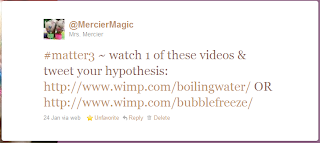I

It can be a difficult thing for someone to express how they feel. Some are afraid of upsetting the others involved. Some may not have the words to express how they feel. And others only know how to protect themselves with defense mechanisms. As an educator and/or parent it can be difficult to watch children when emotions are involved. They may hit. They may throw things. They may scream. Some may even say or do nothing. It is rare that a child will express what they are feeling instead of engaging in these other behaviors.
This is why I spend a lot of time at the beginning of the school year incorporating I statements. Starting fairly simply we begin by noticing, wondering, and thinking. We start by making observations about classroom materials that we will use throughout the school-year: pens, base-ten blocks, the classroom library, etc. Or we may ask questions about the classroom, materials, or characters. We may even share what we think about this same things.
Our phrases begin with I see, I notice, I wonder, I think. It's important that the children begin with the word I. It allows them to own what they see, question, or think. It provides them with a voice. This is key. Many children do not believe they have anything to contribute, or that what they have to say matters. In essence, they feel as if they don't matter.
This may be hard to believe when this generation is coined as the 'me generation', but I recently had twenty children in my classroom who were incapable of stating their observations. One of the materials we discovered this year was a highlighter. Before exploring potential uses, I asked the children to share their observations and got nothing, not even the color. This was not an isolated incident as it occurred time and time again.
What does this have to do with I statements and emotions? Plenty. I won't go into aspects of risk-taking, engagement, or classroom discipline here, but clearly they had learned that their thoughts did not matter. If our students are unable to state the obvious with an I statement, then they will certainly struggle with something more abstract like emotions.
So, begin simply. Once it appears that they are able to do that then move on to more abstract I statements. One of the tricky things with this is getting kiddoes to name their emotions. In order for them to use I statements with their emotions they need to be able to identify them. I often find that literature is a great way to introduce kiddoes to an array of emotions. Allowing them to live vicariously through the characters of books.
Once they are able to identify emotions they typically can begin naming their own. With this comes the ability to use I statements with emotions. Their statements usually begin with I feel. When a child is capable of telling a other human being how they feel they are empowered. Not only are they naming and owning their emotions, but they are holding someone else accountable for the actions that incited them emotion.
You would think that this may upset the other party, but it actually enlightens them. How often are we unaware of the impact our actions and/or words have on others? Most children recognize how they effected someone else. They often stop the behavior, empathize with their peer and/or listen to them. Any one of these things validates the emotion and makes a child feel more comfortable sharing their inner most with others.
- Posted using BlogPress from my iPad

Comments
Post a Comment